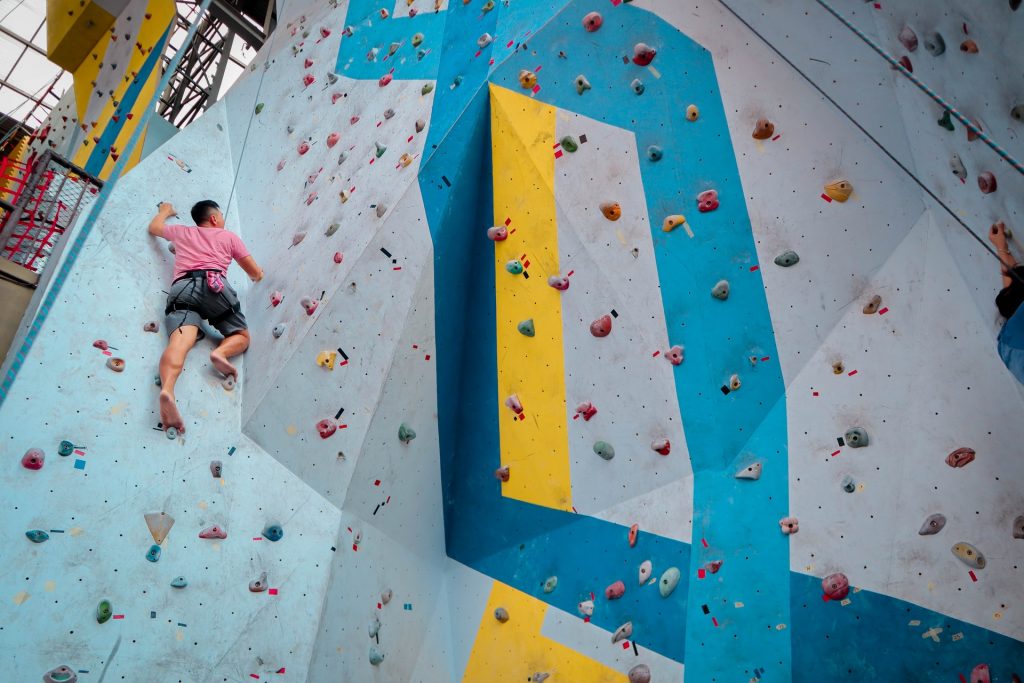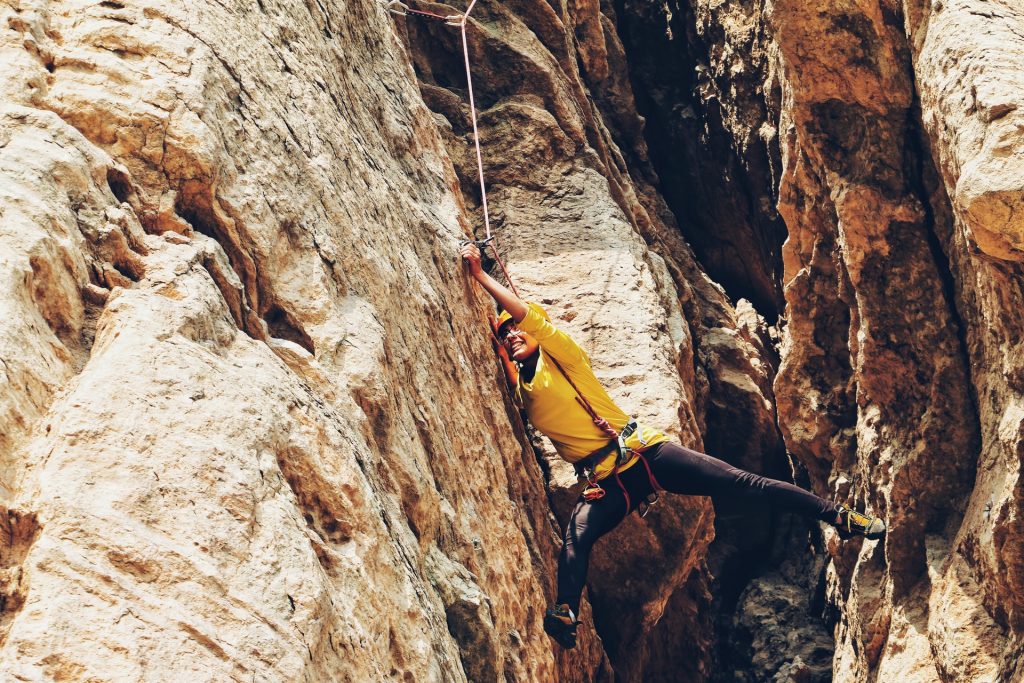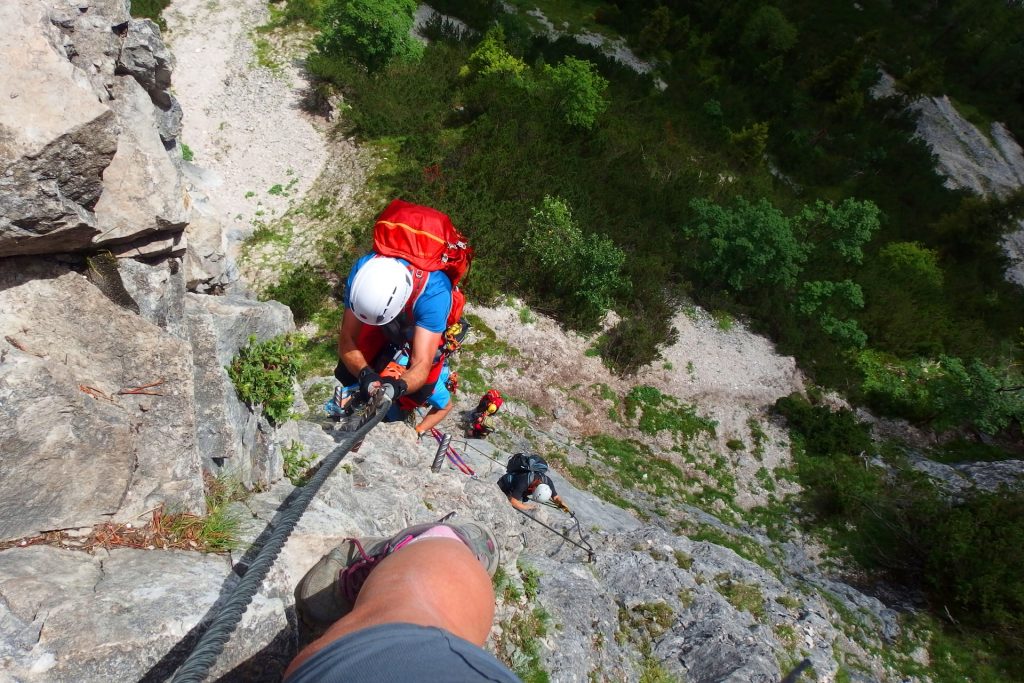Table of Contents
Trad vs sport climbing: Which is better?

Trad vs sport climbing: People who are new to the sport of climbing often find it difficult to distinguish between the two types of climbing. They tend to get confused about what separates them and which one they should do, and this can lead to a lot of frustration for them as they try both styles out. and find them not to be for them. Some popular opinions about the differences between bouldering and multi-pitch/ trad climbing are:
- Bouldering is primarily a mind and body exercise while multi-pitch climbing is more of a mental and physical challenge.
- Bouldering requires less gear than multi-pitch climbing because the routes are shorter, but the specific gear required is more difficult to place in a bouldering environment.
- Bouldering is more of an individual experience while multi-pitch climbing is a team effort.
- Bouldering is more of an individual experience while multi-pitch climbing is a team effort.
This article will help you understand the difference between sport and trad climbing and how you can decide which one you should do based on your experience level.
Trad & Sport Climbing Differences in a Nutshell

There are many differences between the two climbing styles. Trad climbing is a type of mountain climbing that relies on natural features such as trees, rocks, cliffs, and man-made features such as ropes and pitons. The climber uses their hands to gain leverage in order to move upward.
Sport climbing is a type of mountain climbing that relies on artificial features such as bolts, ropes, and metal plates bolted into the rock. The climber uses their hands to gain leverage in order to move upward.
Trad climbers use large holds; sport climbers use small holds. Trad climbs are usually vertical or overhanging with less than 60-degree angles; sport climbs are usually horizontal with over 60-degree angles or less than 30 degrees. Trad climbs have heel hooks for protection; sport climbs have tufa crests for protection. Trad climbers rely on natural features; sport climbers rely on ropes and metal plates.
Trad climbs require more time and skill than sport climbs, but the difficulty of a given climb is not always reflective of the experience or expertise of the climber. Sport climbs can be graded for difficulty whereas trad climbs are only graded for rating and safety.
In a study, researchers found that there was no significant difference in difficulty between the two types of climbs, even though trad climbs are significantly more time and skill intensive than sport.
Differences and Technical Difficulties with Boulder and Trad Climbing

Bouldering differs from trad climbing in a few key ways. First, bouldering climbs are generally shorter than trad climbs which means they are more intense as well as more physically demanding. Second, bouldering walls can be overhanging which makes it harder for climbers to find their footing on the wall and make it easier for them to fall off the wall. Third, boulders are smaller than traditional walls which makes it more difficult for climbers to find footholds on the rocks and hold themselves on the wall.
Technical difficulties with Boulder Climbing are:
- Finding footholds on boulders are more difficult than traditional walls.
- Pulling and locking in is more difficult on boulders because of the smaller rock size.
- Balancing while moving up the wall is harder on boulders than on traditional walls.
- Falling off a boulder is more dangerous than falling off a traditional wall because of the difficult movement and uncertainty of footholds on boulders.
Technical difficulties with Trad Climbing are:
Technical difficulties are a common obstacle in climbing. Some of the most common technical difficulties include: Routes may be strenuous, long, dangerous, and complex. Recently this has become more common due to the popularity of sport climbing.
Some climbers might experience injuries such as a broken finger or a sprained ankle when attempting a route because they did not plan their routes carefully enough or during their workout session and were not exercising properly. Even some indoor gyms might not provide the necessary equipment to help plan and execute routes.
The poor quality of route planning or lack thereof is a major cause of many injuries, especially in youth sports. From a coaching perspective, it would be beneficial for coaches to educate their athletes on proper route execution before they attempt them during a game or practice session.
Climbing is a lot harder when there are other people around, who will sometimes push or pull you while you are trying to climb up, which can make it even harder. When there are other people around, people will try to get a better view of the event and they will sometimes get in your way. Sometimes people will also try to throw down ropes, which can make it harder for you to climb up or down.
Conclusion
Bouldering and Trad Climbing are two of the most popular outdoor sports in the world. They both require different skillsets, but they have a lot in common.
Bouldering: Bouldering is an individual sport that requires a lot of creativity and physical fitness. It is one of the most challenging activities that you can do, but it also gives you a sense of accomplishment knowing that you did something difficult on your own without any help from another person.
Trad Climbing: Trad Climbing is an individual sport that requires a lot of endurance and physical fitness. It is one of the most challenging activities that you can do, but it also gives you a sense of accomplishment knowing that you did something difficult on your own without any help from another person.










Discussion about this post